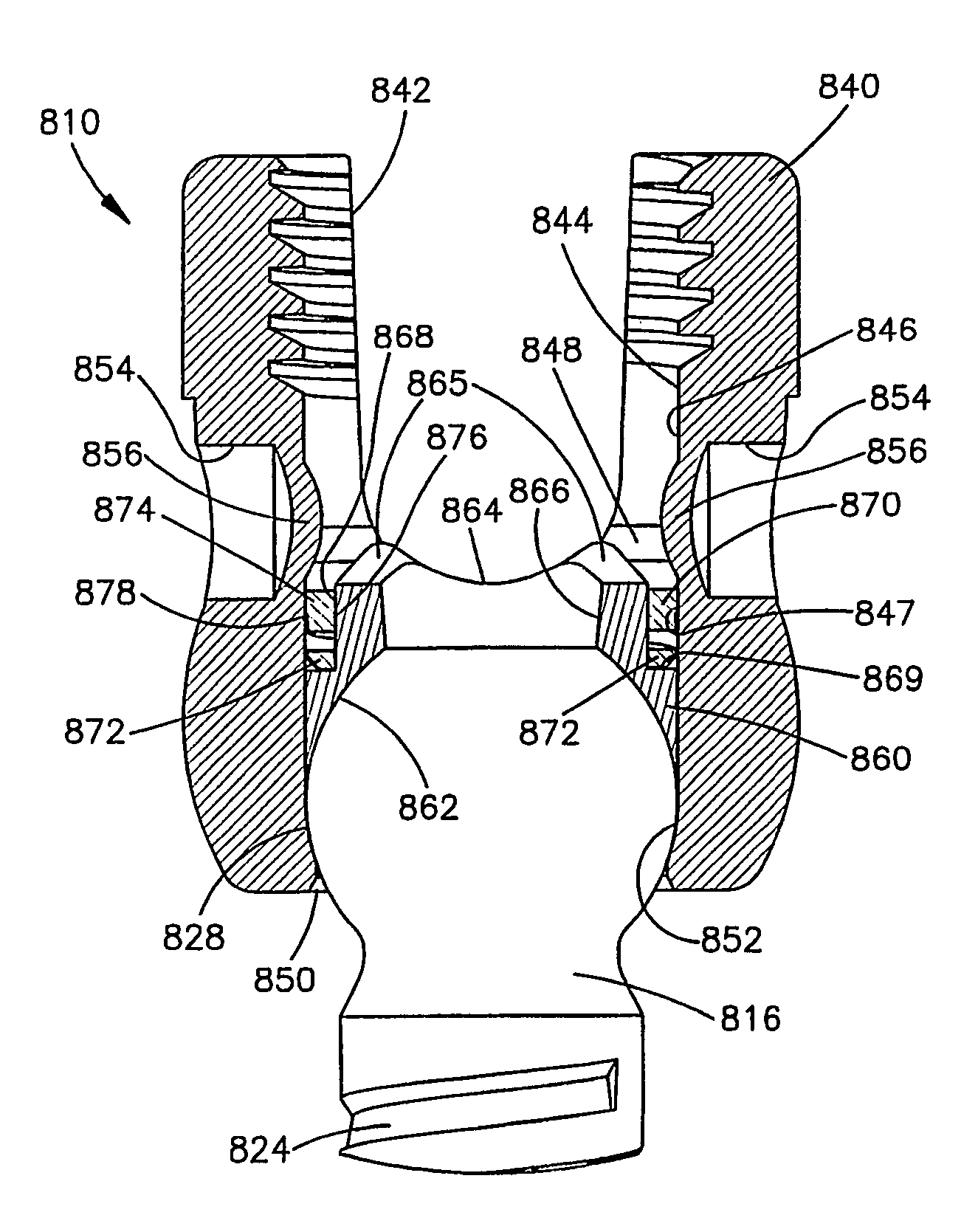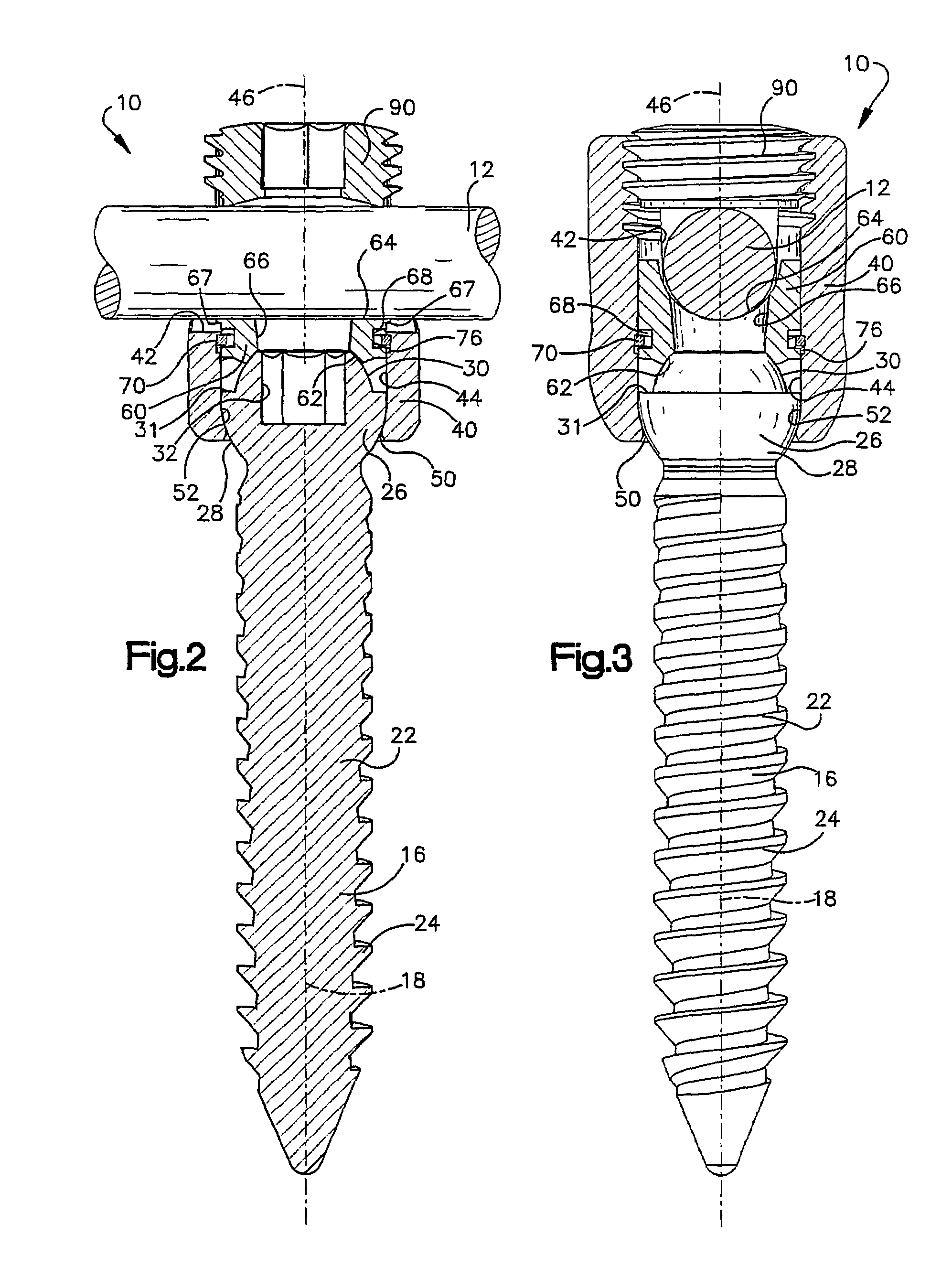Apparatus for connecting a longitudinal member to a bone portion
- Summary
- Abstract
- Description
- Claims
- Application Information
AI Technical Summary
Benefits of technology
Problems solved by technology
Method used
Image
Examples
Embodiment Construction
[0039]The present invention is directed to an apparatus for retaining bone portions, such as vertebrae of a spinal column, in a desired spatial relationship. FIGS. 1–4 illustrate an apparatus 10 constructed according to a first embodiment of the present invention. The apparatus 10 includes a surgically implantable longitudinal member or rod 12 for maintaining bone portions, such as vertebrae of a spinal column, in a desired spatial relationship. The member 12 is connected with vertebrae of the spinal column by fasteners 16.
[0040]The rod 12 is made of a suitable biocompatible material and has a length which is at least sufficient to enable the rod to span at least two vertebrae. Of course, the length of the rod 12 in any particular installation will depend upon the condition to be corrected and the number of vertebrae to be held in a desired spatial relationship relative to each other by the rod.
[0041]The rod 12 (FIGS. 1–3) is connected to a respective vertebra by the fastener 16 mad...
PUM
 Login to View More
Login to View More Abstract
Description
Claims
Application Information
 Login to View More
Login to View More - R&D
- Intellectual Property
- Life Sciences
- Materials
- Tech Scout
- Unparalleled Data Quality
- Higher Quality Content
- 60% Fewer Hallucinations
Browse by: Latest US Patents, China's latest patents, Technical Efficacy Thesaurus, Application Domain, Technology Topic, Popular Technical Reports.
© 2025 PatSnap. All rights reserved.Legal|Privacy policy|Modern Slavery Act Transparency Statement|Sitemap|About US| Contact US: help@patsnap.com



